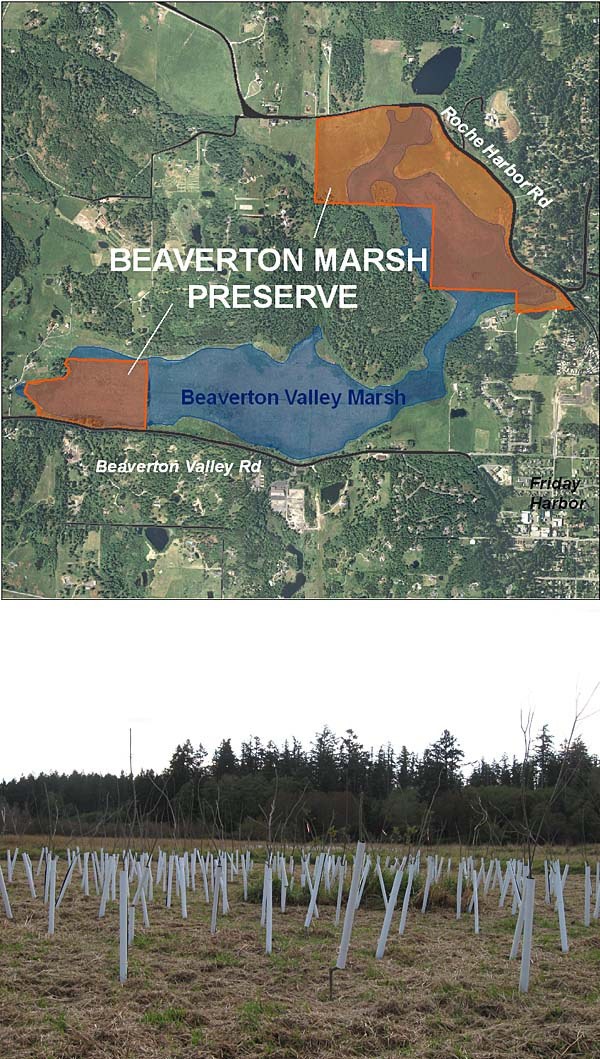What are those white things in Beaverton Valley Marsh?
Mysterious groves of white tubes sprouted seemingly overnight at the San Juan County Land Bank’s Beaverton Marsh Preserve along Roche Harbor Road, causing neighbors and others to scratch their heads as they drove past. Was this some kind of modern art installation? Were alien beings responsible?
No – this was just one step in a major wetland protection and restoration effort that the Land Bank is leading.
Those white tubes are sheltering 1,000 newly planted native willows from hungry gnawing voles and deer, and the rubbing antlers of bucks. Later this fall and winter, more native trees and shrubs – including cottonwood, aspen, twinberry, Pacific crabapple, willows, salmonberry, and swamp gooseberry – will be planted along the edge of the marsh, in areas currently covered with a non-native plant called reed canarygrass. Reed canarygrass is an aggressive, noxious weed that chokes out other species, and doesn’t provide good habitat for many local animals. Wildlife such as migratory birds, amphibians, and small mammals should benefit from establishing native plants in the marsh again.
Beaverton Valley Marsh is the largest wetland complex in the county, at more than 250 acres. It’s been a focus of Land Bank protection for nearly 10 years. A series of purchases in 2001, 2002 and 2006 led to the creation of the 135-acre Beaverton Marsh Preserve along Roche Harbor Road. In September this year, another 40 acres of the wetland were purchased along Beaverton Valley Road.
The non-profit wetlands conservation group Ducks Unlimited has secured federal grants to pay for the Land Bank to do even more land protection in the marsh, as well as the current restoration project. The Land Bank and partners are also evaluating the possibility of primitive trails for walking and wildlife viewing.
Islanders can learn about and help with the ongoing wetland restoration this winter at a series of rain-or-shine interpretive and volunteer work days. There are a lot of plants to plant, and many hands are needed.
On Nov. 20, volunteers can join the Lopez Island Conservation Corps at the Preserve between 11:30 a.m. and 3:30 p.m. The event will begin with an interpretive talk, following by tree-planting and other tasks. There will be more work days on Dec. 1 and throughout February. Call the Land Bank, 378-4402, for more information.



